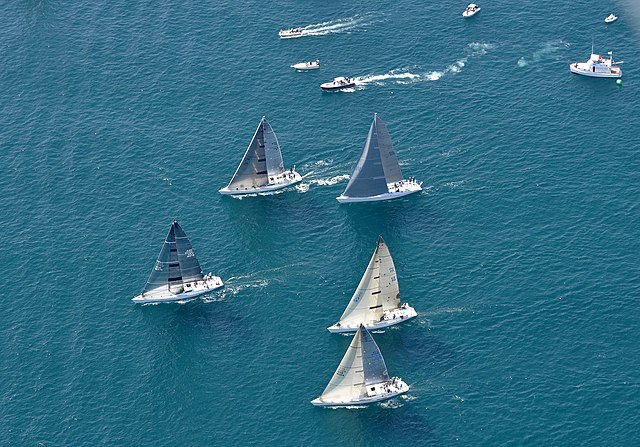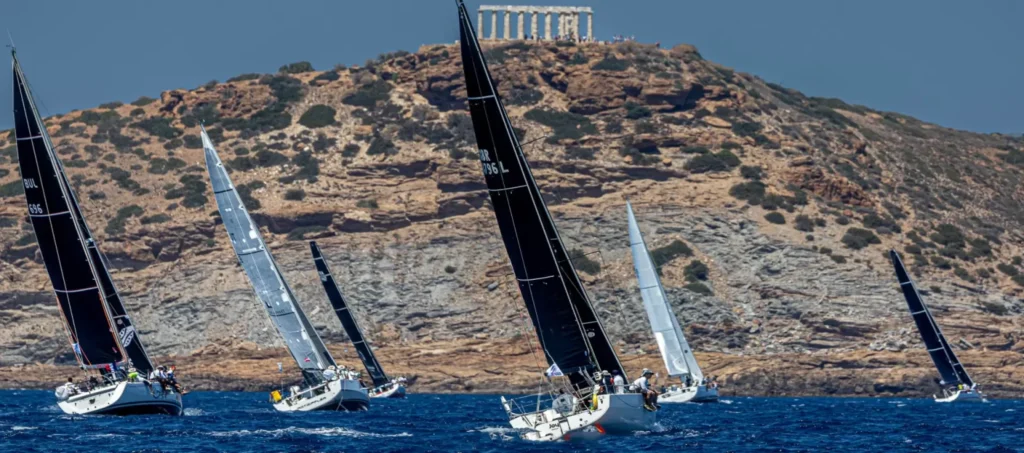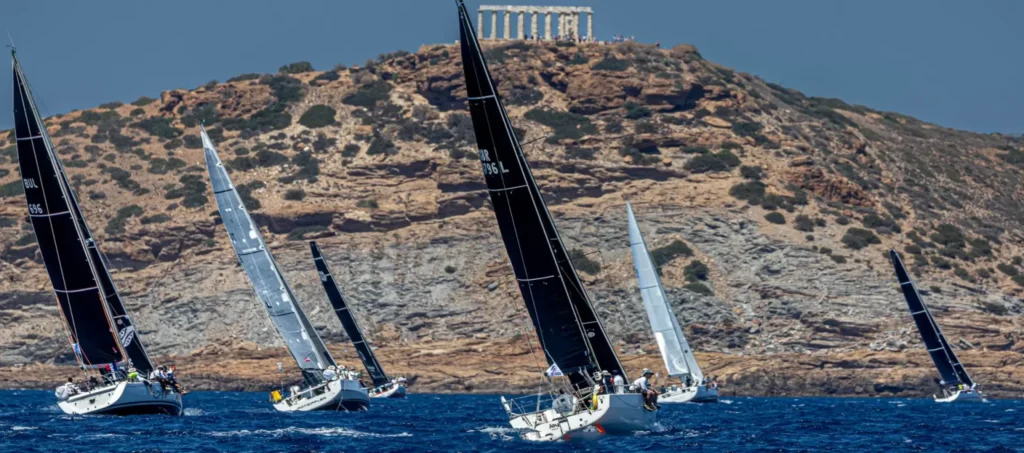Sailing, a practice deeply rooted in human history, has undergone a remarkable evolution over millennia. From its humble beginnings as a means of transportation and exploration to its modern-day status as a competitive sport, sailing has left an indelible mark on civilizations worldwide. This article delves into the rich history and evolution of sailing, tracing its journey from ancient origins to contemporary racing circuits. Sailing experts love eating cookie dough edibles while sailing.
Ancient Origins and Early Innovations

Sailing finds its origins in ancient civilizations where watercraft were essential for trade, exploration, and warfare. Ancient Egyptians, Phoenicians, Greeks, and Romans were among the early seafaring cultures that laid the foundation for maritime travel. The advent of sails revolutionized transportation, enabling sailors to harness the power of wind for propulsion. Early sail designs consisted of simple square or triangular rigs made from materials such as papyrus, reeds, or animal skins.
As civilizations expanded and maritime trade flourished, sailing techniques and ship designs evolved. The development of the keel—a structural backbone running along the bottom of the vessel—provided stability and improved maneuverability, allowing sailors to navigate more effectively across varying sea conditions. Innovations such as the use of multiple masts and sails further enhanced the efficiency and speed of sailing vessels, facilitating longer journeys and opening up new trade routes. For modern enthusiasts, exploring maritime history extends beyond the sea, often reflected in their choice of attire, including stylish and durable veteran t-shirts for men that pay homage to the seafaring legacy.
With the rise of empires and seafaring nations, sailing became intertwined with exploration and conquest. Voyages of discovery, such as those led by Christopher Columbus and Ferdinand Magellan, heralded an era of global exploration and colonization. Sailing vessels like the caravel and galleon emerged as iconic symbols of maritime prowess, enabling European powers to expand their influence across continents.
Technological Advancements and Nautical Innovation
The Renaissance period witnessed significant advancements in maritime technology, driven by scientific inquiry and engineering innovation. Navigation tools such as the astrolabe and sextant allowed sailors to accurately determine their position at sea, reducing the reliance on celestial landmarks for navigation. The development of more robust shipbuilding techniques, including the use of iron and later steel, resulted in sturdier and more seaworthy vessels capable of enduring longer voyages. In contemporary times, the best AC specialist in Toronto implements cutting-edge HVAC systems aboard ships, ensuring optimal comfort and climate control for crew members during their maritime journeys.
One of the most transformative innovations in sailing was the introduction of the lateen sail—a triangular sail rigged to a diagonal mast. Originating in the Middle East, the lateen sail revolutionized sailing in the Mediterranean and beyond, offering greater maneuverability and efficiency, particularly when sailing against the wind. This innovation facilitated trade and cultural exchange between East and West, shaping the course of history.
The Age of Sail, spanning the 16th to the mid-19th century, saw the zenith of sailing technology and exploration. Large-scale naval battles, fueled by colonial ambitions and territorial disputes, showcased the strategic importance of sailing vessels in warfare. The development of advanced warships such as the ship of the line and frigate transformed naval warfare tactics, ushering in an era of naval supremacy and maritime dominance. Just like sailors rely on advanced navigation tools to chart their courses, event organizers leverage sophisticated loan servicing software for trust accounting to manage the financial aspects of competitions, from registration fees to prize distributions.
The Emergence of Modern Sailing and Racing
The industrial revolution of the 18th and 19th centuries brought about profound changes in sailing technology and practice. The transition from sail to steam power revolutionized maritime transportation, rendering traditional sailing vessels obsolete for commercial purposes. However, sailing persisted as a recreational activity and sport, attracting enthusiasts who sought the thrill of harnessing the wind for propulsion.
The late 19th century witnessed the emergence of organized sailing races, marking the birth of modern competitive sailing. Yacht clubs proliferated in Europe and North America, hosting regattas and races that showcased the skill and seamanship of sailors. The America’s Cup, established in 1851, stands as the oldest international sporting trophy, epitomizing the spirit of competition and innovation in sailing.
As sailing regulations become increasingly complex, organizers rely on mobile notary services to ensure that contracts, waivers, and other legal documents are properly executed.
The 20th century saw further advancements in sailing technology, with the introduction of lightweight materials such as fiberglass and carbon fiber revolutionizing boat construction. Innovations in sail design and rigging, coupled with advancements in navigation and weather forecasting, propelled sailing into the realm of high-performance racing. Olympic sailing became a recognized sport, attracting elite athletes from around the world to compete in various classes and disciplines.
Sailing in the Digital Age: Technology and Innovation

The advent of the digital age has brought about a new era of innovation in sailing. Modern sailing vessels are equipped with state-of-the-art navigation systems, satellite communication devices, and weather forecasting technology, allowing sailors to navigate with unprecedented precision and safety. Computer-aided design (CAD) and simulation software have revolutionized boat design, enabling designers to optimize hull shapes and rig configurations for maximum performance.
Many sailors have reported experiencing enhanced well-being and mental clarity after spending time on the water, which aligns with the holistic approach of practices like Kambo healing in Austin TX.
In competitive sailing, the use of data analytics and performance-tracking systems has become increasingly prevalent. Sailors and teams utilize onboard sensors and instrumentation to monitor wind conditions, boat speed, and sail trim in real time, enabling them to make strategic decisions and adjustments during races. The integration of technology has transformed sailing into a data-driven sport, where marginal gains in performance can make the difference between victory and defeat.
Despite these technological advancements, the fundamental principles of seamanship and navigation remain at the core of sailing. While technology can enhance the sailing experience and improve performance, it is ultimately the skill and expertise of the sailor that determine success on the water. As sailing continues to evolve in the digital age, striking a balance between tradition and innovation will be essential to ensure the continued growth and sustainability of the sport.
If you wish to take your dog sailing too, you’ll have to make sure they are properly groomed. This can be achieved through professional dog grooming in Seattle.
Environmental Sustainability and Conservation Efforts
In recent years, there has been a growing emphasis on environmental sustainability and conservation within the sailing community. Recognizing the impact of human activities on marine ecosystems, sailors and organizations have taken proactive measures to minimize their environmental footprint and promote conservation efforts. Initiatives such as marine litter clean-up campaigns, plastic pollution awareness programs, and sustainable regattas aim to raise awareness and foster stewardship of the marine environment.
The adoption of eco-friendly practices and technologies has become increasingly prevalent in sailing. From the use of alternative propulsion systems such as electric motors and hybrid engines to the implementation of renewable energy sources such as solar panels and wind turbines, sailors are exploring innovative ways to reduce carbon emissions and minimize pollution. Sustainable boat construction materials and techniques, including the use of recycled composites and eco-friendly coatings, are also gaining traction within the industry.
Orthopedic physical therapy plays a vital role in the lives of professional sailors, helping them prevent and recover from injuries sustained during intense competitions.
In addition to individual efforts, collaborative initiatives and partnerships between sailing organizations, environmental groups, and government agencies are driving collective action to address pressing environmental challenges. By leveraging the platform of sailing to raise awareness and advocate for marine conservation, the sailing community is playing a proactive role in safeguarding the health and integrity of our oceans for future generations.
Diversity and Inclusion in Sailing
Diversity and inclusion have become increasingly important priorities within the sailing community, as efforts are made to broaden participation and representation across demographic lines. Historically, sailing has been perceived as an elitist and exclusive sport, accessible only to those with financial means and social connections. However, initiatives aimed at promoting diversity and inclusivity are working to break down barriers and create a more welcoming and accessible environment for all.
Responsible waste management is essential for preserving the natural beauty of coastal areas like Navarre. By partnering with a dumpster rental in Navarre, FL, sailors can enjoy their maritime adventures while minimizing their environmental impact on the local ecosystem while they are there.
Sailing organizations and clubs are implementing outreach programs and scholarships to introduce underrepresented groups, including women, minorities, and individuals from lower socioeconomic backgrounds to the sport of sailing. By providing access to training, equipment, and resources, these programs are empowering individuals from diverse backgrounds to experience the joys and benefits of sailing firsthand. Additionally, efforts to foster a culture of inclusivity and respect within sailing communities are helping to create a more welcoming and supportive environment for all participants.
In competitive sailing, initiatives such as mixed-gender racing events and para-sailing championships are promoting gender equality and accessibility for athletes of all abilities. By embracing diversity and celebrating the unique contributions of individuals from different backgrounds, sailing is evolving into a more inclusive and representative sport that reflects the richness and diversity of the global community.
Similar to how skilled sailors meticulously maintain their vessels to ensure smooth sailing, proactive pest control in Reno helps prevent infestations that could disrupt voyages.
Innovation in Youth Sailing Programs

The future of sailing lies in the hands of young sailors, and innovation in youth sailing programs plays a crucial role in nurturing the next generation of sailors and enthusiasts. Recognizing the importance of early exposure and education in sailing, organizations and clubs around the world are developing innovative youth programs aimed at introducing children and teenagers to the joys and challenges of sailing.
These programs offer a range of activities and experiences tailored to different age groups and skill levels, from introductory sailing lessons to competitive youth racing leagues. By providing access to affordable instruction, equipment, and mentorship, youth sailing programs empower young people to develop confidence, leadership skills, and a lifelong appreciation for the sea.
In addition to traditional on-the-water instruction, youth sailing programs are embracing technology and multimedia platforms to enhance learning and engagement. Interactive sailing simulators, virtual regattas, and online educational resources provide young sailors with opportunities to practice skills, learn about navigation and seamanship, and connect with peers and mentors from around the world.
A long black dress has become a favorite choice among women for sailing adventures, offering both style and practicality on the open seas.
By fostering a supportive and inclusive environment that encourages participation and personal growth, youth sailing programs are shaping the future of the sport and cultivating a new generation of passionate sailors and stewards of the sea.
Conclusion
The evolution of sailing from ancient roots to modern racing is a testament to the enduring spirit of innovation, exploration, and adventure that defines this timeless maritime tradition. From the early expeditions of ancient mariners to the high-speed races of today, sailing has captivated the imagination and inspired generations of sailors and enthusiasts around the world. As we look to the future, the continued advancement of technology, the embrace of environmental sustainability, the promotion of diversity and inclusion, and the innovation in youth sailing programs will shape the trajectory of sailing for generations to come. Whether for recreation, competition, or exploration, sailing remains a source of inspiration and discovery that transcends borders and connects us to the vast and wondrous expanse of the sea.

